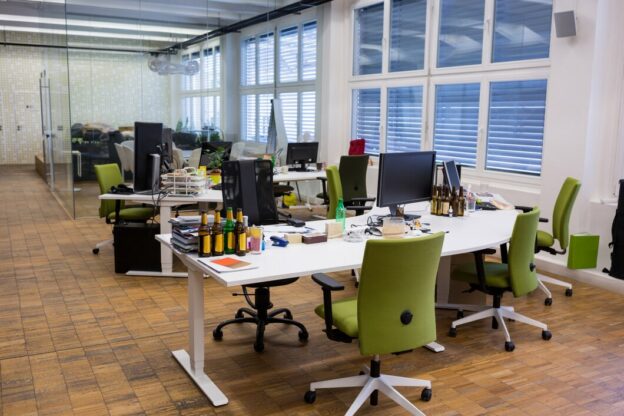In the dynamic world of business, the design of office workstations plays a pivotal role in enhancing productivity, employee well-being, and overall workplace efficiency. As we move towards more innovative and flexible work environments, staying updated with the latest trends in commercial office workstation furniture design is essential. Here, we explore the top trends that are shaping modern workspaces and boosting productivity.
1. Ergonomic Excellence
Ergonomic design is at the forefront of modern office furniture trends. Prioritizing employee comfort and health, ergonomic workstations are designed to minimize physical strain and promote better posture:
- Adjustable Desks: Sit-stand desks that allow employees to alternate between sitting and standing throughout the day.
- Ergonomic Chairs: Chairs with adjustable height, lumbar support, and armrests to ensure optimal comfort.
- Keyboard Trays and Monitor Stands: Accessories that help maintain proper alignment and reduce strain on the neck and wrists.
2. Modular and Flexible Workstations
Flexibility is a key component of contemporary office design. Modular workstations offer the adaptability needed to cater to various work styles and changing office layouts:
- Reconfigurable Units: Workstations that can be easily rearranged to create different configurations based on project needs or team sizes.
- Mobile Furniture: Pieces that can be moved and adjusted quickly to support dynamic work environments.
- Multi-Functional Desks: Desks that can serve multiple purposes, such as collaboration, individual work, or even informal meetings.
3. Technology Integration
With the increasing reliance on technology, modern workstations are designed to seamlessly integrate tech solutions:
- Built-In Power Outlets and USB Ports: Easy access to power sources for charging devices.
- Cable Management Systems: Solutions to keep cables organized and out of sight, reducing clutter.
- Smart Desks: Desks equipped with features like wireless charging, adjustable lighting, and connectivity for smart devices.
4. Sustainable and Eco-Friendly Materials
Sustainability is a growing concern in office design. Incorporating eco-friendly materials in workstation furniture is not only good for the environment but also resonates with the values of many modern businesses:
- Recycled and Recyclable Materials: Using materials that have been recycled or can be recycled at the end of their life cycle.
- Sustainable Wood and Finishes: Sourcing wood from certified sustainable forests and using non-toxic finishes.
- Energy-Efficient Manufacturing: Choosing furniture from manufacturers who prioritize energy-efficient production processes.
5. Collaborative Spaces
Collaboration is essential for innovation and problem-solving. Modern workstations are designed to foster teamwork and open communication:
- Open Plan Layouts: Workstations that support an open-plan office, encouraging interaction and teamwork.
- Collaboration Pods: Small, semi-enclosed areas within the office designed for group discussions and brainstorming sessions.
- Flexible Meeting Spaces: Workstations that can be quickly converted into meeting areas with the use of movable walls or partitions.
6. Personalization and Customization
Personalized workstations can enhance employee satisfaction and productivity by catering to individual needs and preferences:
- Customizable Desks: Desks with features that can be tailored to individual requirements, such as storage options or surface finishes.
- Personal Storage Solutions: Lockers and drawers that allow employees to keep personal items securely stored.
- Aesthetic Customization: Options to choose colors, materials, and finishes that reflect personal style or corporate branding.
7. Biophilic Design Elements
Incorporating elements of nature into workstation design can significantly enhance well-being and productivity:
- Natural Materials: Using wood, stone, and other natural materials in workstation construction.
- Indoor Plants: Integrating greenery into workstation design to improve air quality and provide a calming atmosphere.
- Natural Light: Designing workstations to maximize exposure to natural light, reducing the need for artificial lighting.
Conclusion
The trends in commercial office workstation furniture design are evolving to create more productive, flexible, and employee-friendly work environments. By embracing ergonomic excellence, modularity, technology integration, sustainability, collaborative spaces, personalization, and biophilic design, businesses can enhance productivity and foster a positive workplace culture. Staying updated with these trends will ensure that your office remains at the cutting edge of functionality and design, ultimately driving success and employee satisfaction.
